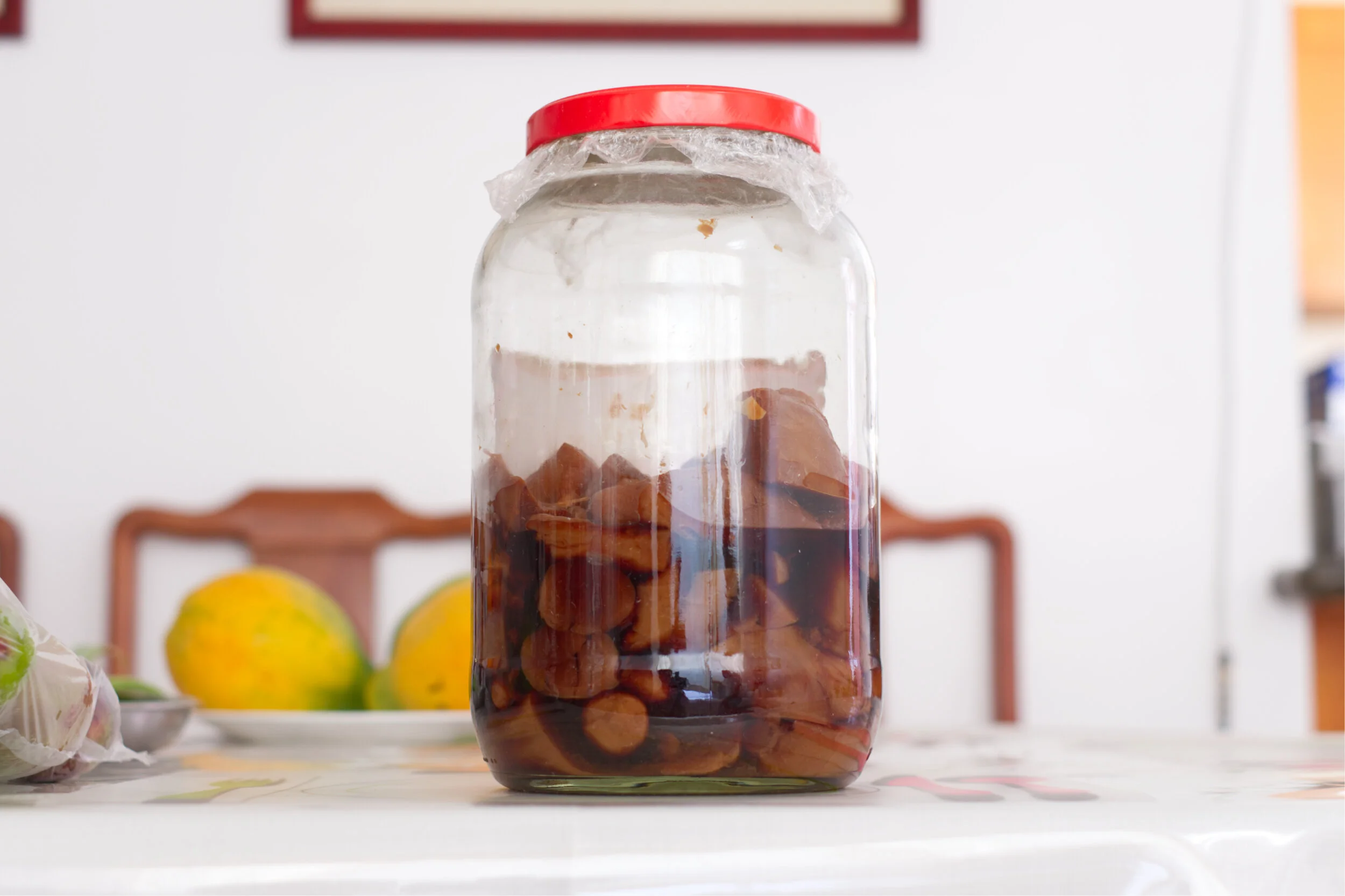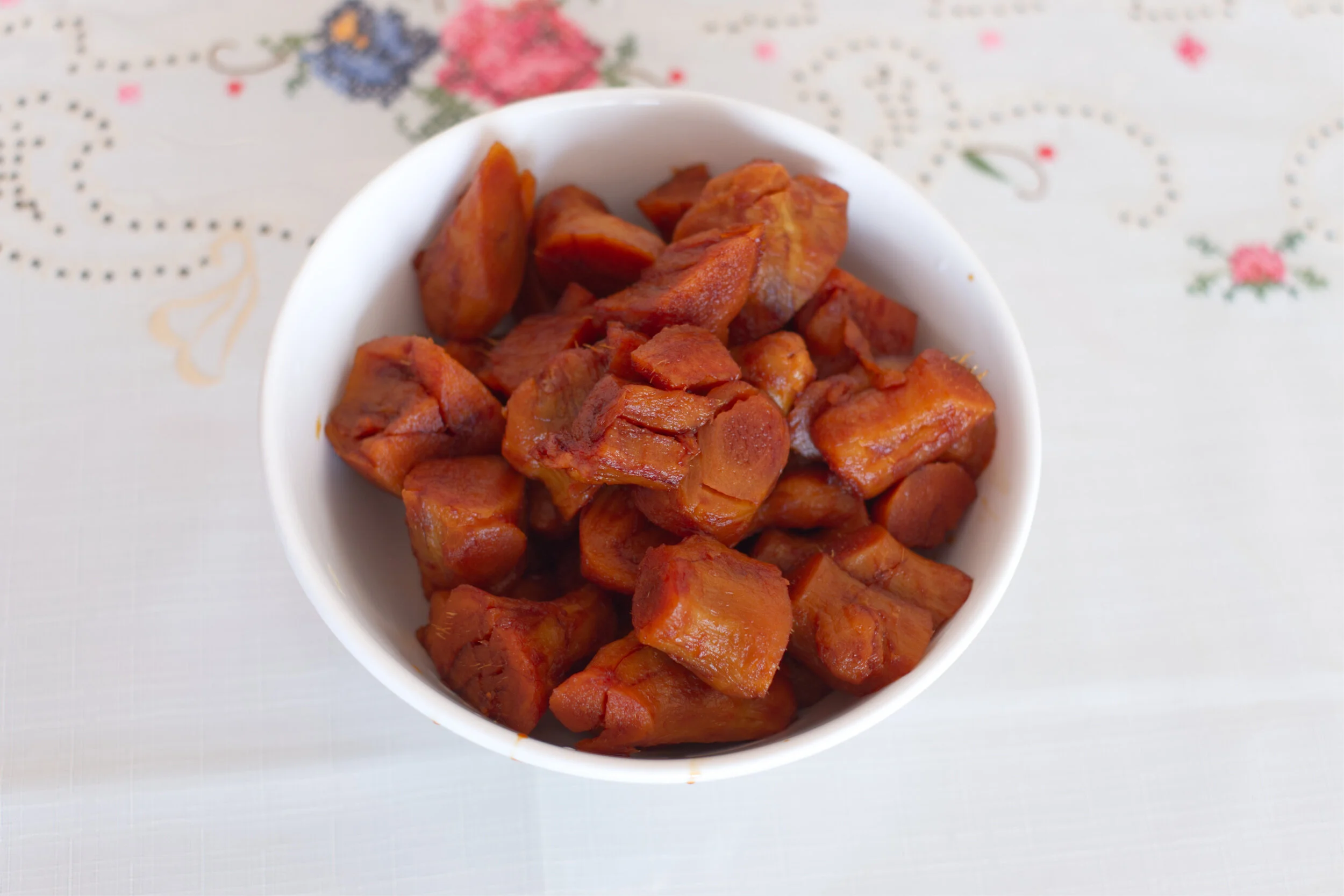Pickled Young Ginger - 醃糖醋子薑 - Yim Tong Chou Ji Geung

醃糖醋子薑 yim tong chou ji gerung is a traditional recipe for pickling young ginger. My folks are from 中山 Zhongshan and the area produces a lot of ginger. But Zhongshan ginger is not just plentiful, but it’s really high quality ginger. Young ginger is highly prized there because of the sandy soil that the ginger grows in, along with the terroir, the young ginger is flavorful and there’s no fibers in it. In the early summer is when young ginger is best. It’s planted once the winter weather breaks around February and the temperature starts to warm up more and ginger is planted. After 3 months or about 100 days, that’s when young ginger is ready for harvesting. It’s really nice for certain dishes for texture and spice that isn’t harsh yet.
This is how my parents make this and it preserves young ginger to be enjoyed throughout the year. There are other methods of this, one also sun dries this after it’s been poached and is really tasty to have and can be stored for years. 糖醋 tong chou (sugar and vinegar) is a very old combination for pickling and preserving since both are considered preservatives in Chinese cuisine.Below are the instructions from my parents about how to make this. Young ginger is hard to get in America. Hawaii grows some, but it still doesn’t compare to the quality in Zhongshan. So my parents have a method for using older ginger as well. Specific measurements are not always included because it should be adjusted with the taste of each batch of ginger. So be sure to taste and adjust to your preference.
Young Ginger Preservation Method
Ingredients:
Young ginger
添丁甜醋 Sweetened Black Vinegar (my folks like Koon Chun brand for this)
Refined sugar
Distilled or apple cider vinegar
Water
Clean a large jar.
Peel young ginger with a spoon, slice into desired size, they should be large chunks. Lightly smash the ginger so it absorbs the vinegar more easily. The ginger should not be flattened and should stay mostly the same shape.
Add the vinegar, sugar, and water. For every bottle of Koon Chun sweetened black vinegar, they add about 1 cup of water and roughly 1/3 cup of distilled or apple cider vinegar, and sugar to taste. The water and extra vinegar is added for balance, but this is roughly how much my mom added when she made some. This can be adjusted each time to your preference.
Bring this to a boil and making sure the ginger is submerged and the sugar is fully dissolved. Once this is boiled, reduce the heat to a simmer and cover the pot. Simmer for about 10-15 minutes or until the young ginger is soft.
Place ginger into jar and try to submerge as much ginger under the vinegar as possible. So long as the ginger is submerged in the sweetened vinegar solution it will be good for years. Otherwise, eat the ginger that is exposed sooner. Store in a dry, dark place outside of exposure to sunlight.
Jar of young ginger made pickled over a year ago. This ginger was grown in Hawaii.
Old GInger Preservation Method
Ingredients:
Old ginger
添丁甜醋 Sweetened Black Vinegar (my folks like Koon Chun brand for this)
冰糖 Rock sugar (bing tong)
Distilled or apple cider vinegar
Water
The procedure is very similar to picking young ginger. There are two differences about this.
1) 冰糖 rock sugar (bing tong) is used instead of refined sugar. That’s because 冰糖 rock sugar has a property to make things soft quickly when it’s braised or simmered in it. Old ginger is tougher and has fibers and this will help soften it.
2) Unlike young ginger that requires it to be simmered once, old ginger needs to be simmered at least once a day, preferably twice or more, for two to three days long before it is ready. Each time you simmer it, bring the ginger in the vinegar to a boil, drop the heat to a simmer while covered for 10-15 minutes. (It is always boiled and simmered with the cover on so the vinegar doesn’t evaporate away and dry off throughout this process.) Set this off the heat and this does not need to be refrigerated. Out of convenience, my parents say to boil and simmer once in the morning when you wake up, and once at night before you go to sleep. The ginger should be ready after three days, it could be ready as soon after two days, but you have to bite into it to check and see if it has become tender. Refrigeration is not needed at all during this process.
Bowl of pickled old ginger. This ginger was grown from China, but bought at a market in the Honolulu Chinatown. At the time this was, made there was no young ginger from Hawaii available.






